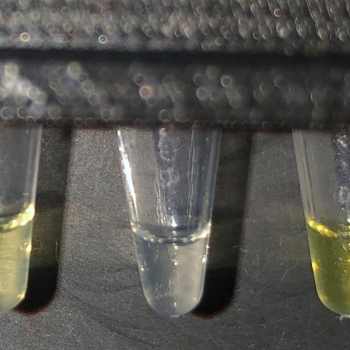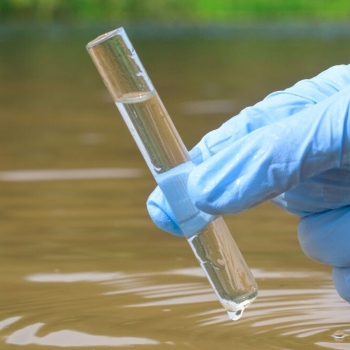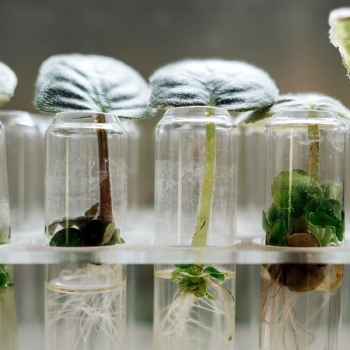Microbial Testing of Water
Facts about water
Water is one of the most important resources found on earth.1 In similar regard, ‘Pure water is considered as the worlds’ first and foremost Medicine’ since the quality and quantity of water we drink has a direct impact on our immune system. In the last century, water use has grown at more than twice the rate of population increase.2 According to the current statistics, 80% of all illness in the developing world is water related and consumption of unsafe water kills 200 children every hour.3,4
But do you know that the water we consume and use in industrial formulation of products could be contaminated with disease causing microorganisms?
Microbial Water Contamination
Microbial water contaminants namely bacteria, viruses and parasites are considered as a major contributor of several preventable water borne diseases such as cholera, diarrhea, typhoid, dysentery and polio.5,6,7 These microbial contaminants can get to our water systems through discharge from water treatment plants, hospitals, agricultural waste, sewer systems and industrial effluents.5 Microbial water testing and regular monitoring of our water systems helps to estimate the number of microorganisms present and allows the recovery of microorganisms in order to identify them.6 From this data, the quality of water can be verified and quick interventions imposed. Consequently, microbial water testing and regular monitoring helps to ensure the water provided is safe and free from disease causing organisms.5,7,8
Microbial water testing and monitoring programmes
Indicator Microorganism
Pathogenic microorganisms mainly bacteria, viruses and parasites are mainly associated with fecal waste.6,9,10 Direct/individual testing and monitoring of all the pathogenic micro-organisms is considered difficult and a nearly impossible adventure.9 This is because, microbial pathogens are many, they are shed into our water inconsistently and they tend to be found in very low concentrations in water.9,11 Instead selected ‘Indicator microorganisms’ are used to ascertain the presence of pathogenic microbial organism in water. The presence of indicator microorganisms in water can therefore be used to identify a potential health hazard, recognize a contamination source and evaluate the effectiveness of water contamination risk reduction actions.12 The most common indicator microorganisms - fecal coliforms, enterococci, total coliforms and E.coli - are those microorganisms that are normally prevalent in the intestines and feacal matter of warm-blooded animals.9,11,12 In microbial water testing and monitoring the presence of indicator microorganisms beyond a certain established limit indicates contamination of water with pathogens and water quality deterioration.
Culture Media
In this method, selective media have been developed for the detection of different microbial water contaminants. Pseudomonas aeruginosa can be detected using Pseudomonas agar, Coliforms and E. coli can be detected using membrane lauryl sulphate agar/broth, enterococci can be detected using membrane enterococcus agar.13,14 The media allows the colony to grow so that they become visible to the naked eye. To ensure an appropriate number of colonies is generated and statistically interpreted several dilutions of the water sample are usually cultured from the original water sample.15
Growth in the respective media acts as an indicator of the presence of the microorganisms. Further culturing can then be done to confirm the identity of the suspect colonies in the selective media.13,15,16
Membrane Filtration
In membrane filtration method, the water sample is passed through a membrane filter of 0.45 µm, the filter is then asceptically transferred into agar plate and membrane is incubated.13,16,17. The microbial cells that are trapped in the membrane will grow into colonies that can be counted and microbial density of the water samples calculated. Using this technique, very low microbial presence can be detected since large volume of water sample can be filtered.17
CSI Laboratory for your microbial water testing and monitoring needs
At CSI Laboratory, a consolidated microbial water testing programme; culture media, membrane filtration and indicator microorganism is implemented to analyze the presence of pathogenic microorganism including staphylococci, Escherichia coli, fecal coliforms, fecal enterococci and Pseudomonas aeruginosa.
We carry out short and long term microbial testing and monitoring of water from manufacturing units, retail outlet, food processing units, hospitals and food outlets. We also provide services for microbial water analysis for regulatory approval certification, environmental assessment programs as well as research.
We have our presence in Nairobi, Kenya and our laboratory is accredited by the Kenya Accreditation Service (Laboratory Number: KENAS/TL/48). We aim to provide our unwavering support in Kenya and across the world.
Contact us for your microbial water testing and monitoring needs in our state of the art facility. Sample collection is at your own convenience. Our personnel can visit to collect the samples for microbial water testing. Subsequently, we provide a complete report covering the essential analysis parameters
References
1. https://www.fs.usda.gov/science-technology/water-air-soil
2. https://sdgs.scout.org/project/pure-water-worlds-first-and-foremost-medicine
3. http://www.cnn.com/SPECIALS/road-to-rio/secret-life-drinking-water
4. http://blueplanetnetwork.org/water/
5. https://www.afro.who.int/health-topics/water
6. https://www.sciencedirect.com/topics/agricultural-and-biological-sciences/water-analysis
7. https://www.maca.gov.nt.ca/en/services/drinking-water-nwt/monitoring-and-testing-%E2%80%93-proving-water-safe
8. https://www.ncbi.nlm.nih.gov/pmc/articles/PMC3037048/
9. https://www.epa.gov/sites/default/files/2015-09/documents/2009_03_13_estuaries_monitor_chap17.pdf
10. https://cawood.co.uk/blog/indicator-organisms-monitoring-pathogens-in-food/
11. https://www.sciencedirect.com/topics/immunology-and-microbiology/indicator-bacteria
12. https://iwaponline.com/jwh/article/13/2/319/28316/Microbial-indicators-pathogens-and-methods-for
13. https://www.rapidmicrobiology.com/test-method/theory-and-practice-of-microbiological-water-testing
14. https://aurigaresearch.com/microbiological-testing-of-water/
15. https://www.researchgate.net/publication/330401314_Bacteriological_water_analysis
16.https://en.wikipedia.org/wiki/Bacteriological_water_analysis
17. https://microbeonline.com/analysis-of-water-membrane-filtration-technique/
_small.png)







